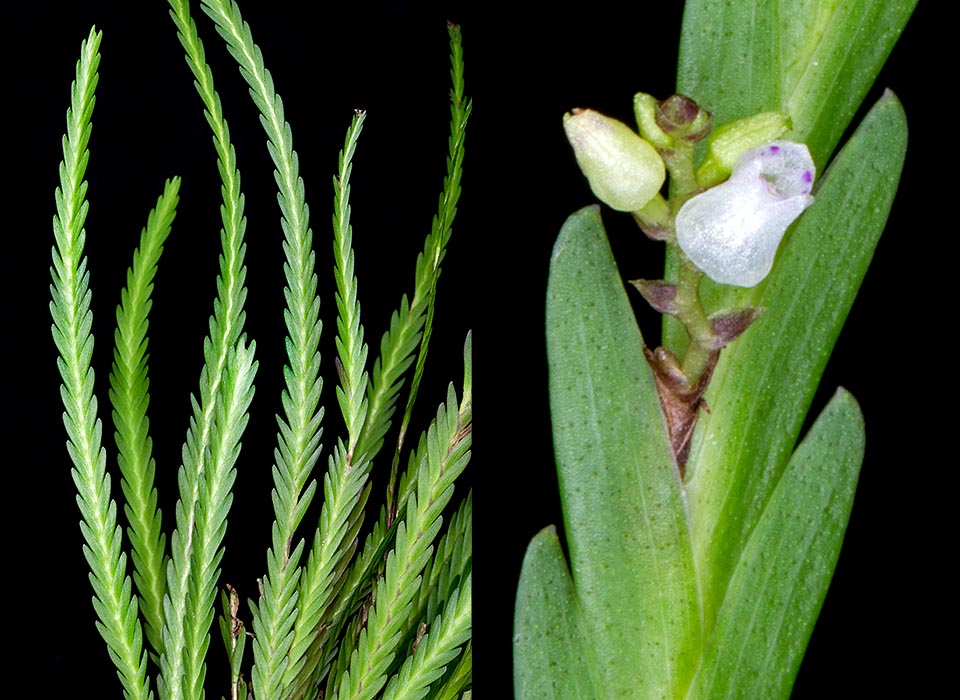Family : Orchidaceae

Text © Pietro Puccio

English translation by Mario Beltramini
The species is native to the Bismarck Archipelago, Maluku Islands and New Guinea where it grows on the trees of the humid forests, less frequently on limestone rocks covered by moss, from the sea level up to about 1100 m of altitude.
The name of the genus is the combination of the Greek substantives “πούς, ποδός” (pús, podόs) = foot and “χεῖλος” (cheilos) = lip, with reference to the shape of the labellum; the the specific name is the Latin adjective “scalpelliformis, is”, formed by the combination of the substantives “scalpellum, i” = lancet, bistoury, and “forma, ae” = look, shape, hence shaped like a bistoury, with reference to the leaves.
The Podochilus scalpelliformis Blume (1849) is a cespitose epiphyte species with short rhizome and thin stems, erect or ascending, not ramified, 10-20 cm long, wholly covered by alternate leaves, distichous, imbricate, laterally compressed, linear with obtuse or acute apex, about 1,4 cm long and 0,3 cm broad, slightly decreasing towards the apex, of intense green colour. Terminal or axillar racemose inflorescences, up to 3 cm long, with tiny flowers urn-shaped, of about 2 mm of diameter, of white tending to yellow colour with the age, opening in succession 1-3 at the time for a long period of time. Ovate dorsal sepal with obtuse apex, about 1,5 mm long and 1 mm broad, merged at the base with the oblong lateral sepals, about 2 mm long and 1 mm broad.

Rare in culture, the Podochilus scalpelliformis grows on the trees and the limestone mossy rocks in the humid forests of Bismarck Archipelago, Maluku and New Guinea. The thin stems, not ramified, 10-20 cm long, are covered by alternate, distichous, imbricate, laterally compressed leaves. Urn-shaped tiny flowers of about 2 mm of diameter © Giuseppe Mazza
Ovate petals, about 1 mm long and broad, with purple dots at the apex, oblong-ovate labellum with obtuse apex, about 2 mm long and 1 mm broad, with purple dot at the apex, and 1 mm long column.
It reproduces by seed, in vitro, but usually by division with each section provided of at least 3-4 stems.
Mini orchid diffused in the origin sites, but rare in cultivation, present only in specialized collections, cultivable in intermediate or warm greenhouse, with high humidity, 70-80 %, and air in continuous movement. It can be mounted on branches, pieces of bark or rafts of cork or of roots of arboresecent ferns, with sphagnum at the base to keep the humidity to the roots, or cultivated in pot with draining compost that can be formed by finely cut bark fragments and charcoal with addition of sphagnum. The watering must be regular, as not having a precise rest period, in way to maintain constantly humid the substratum, but without stagnations, that may cause rottenness, utilizing rainwater, by reverse osmosis or de-mineralized.
The species is inscribed in the appendix II of CITES (species whose trade is internationally ruled).
